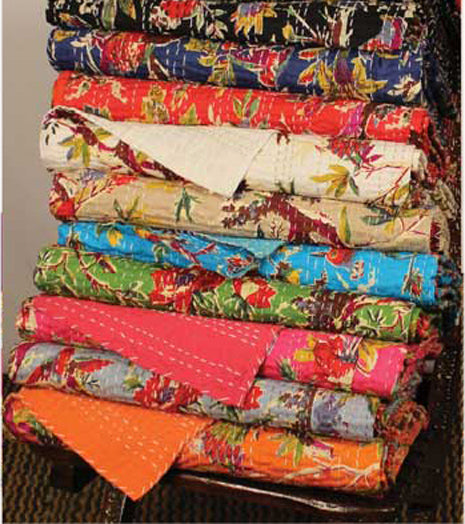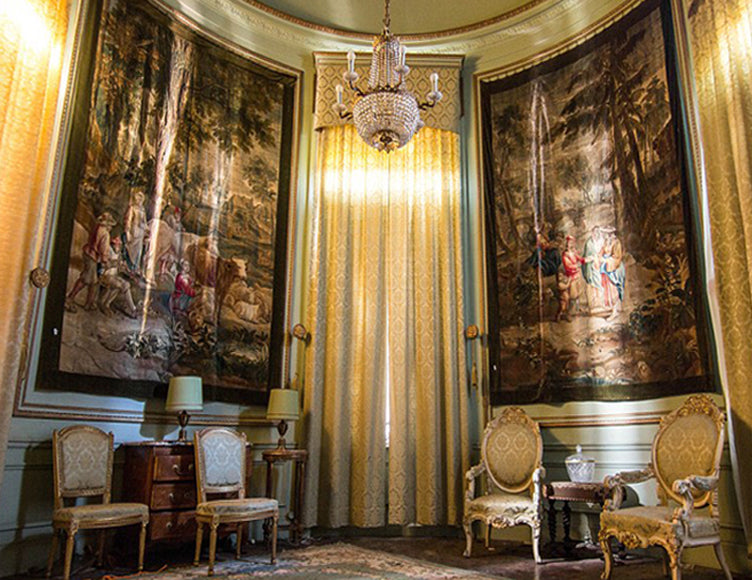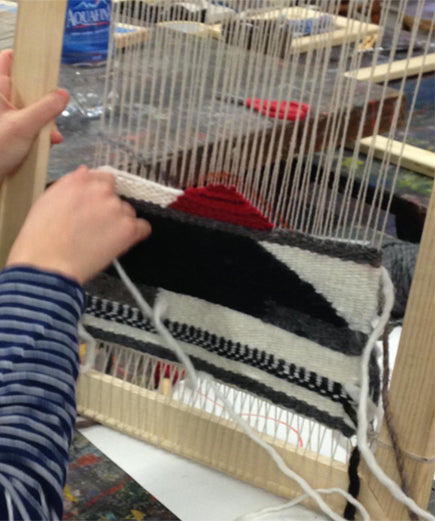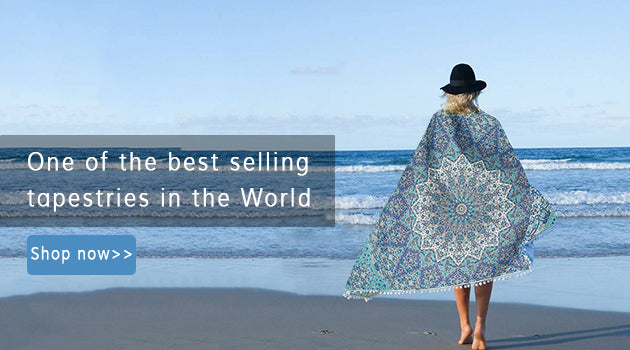All that you need to know about Tapestries
Probably the earliest use of tapestries was to cover the cold stone walls of the huge royal castles. From then on, tapestries have come a long way in becoming the focal points of home décor, in almost every home across the world. By definition, Tapestry is a woven fabric where the design is built during the course of weaving.
In a broad way it includes any fabric that is used to cover walls, floors or furniture, be it heavy, hand-woven, machine-woven, or embroidered. The recent decades have however narrowed tapestries to include only those textiles that are heavy, patterned, reversible, figured or hand-woven. The use of these is either as wall hangings or as upholstery fabric.
In ancient days all tapestries were handwoven and were extremely expensive. Therefore, they were the properties of the wealthy and the royal families. Today, tapestries are available in different materials and designs, and are available well within the budget of everyone. Nevertheless, handwoven tapestries are still very expensive.
Tapestries as Sets
Tapestries would usually be designed as sets or single panels. One set of tapestry consisted of many individual panels that related to each other through style, workmanship and subject. They had to be hung together to give the complete picture. How many pieces there were to be in a set would be decided depending upon the dimensions of the walls that were to be covered.
It was in Europe that tapestries were designed as sets, right from the middle ages till the 19th century. The Life of Louis XIV, which was a 17th century set, had 14 tapestries along with two supplementary panels. They were designed by Charles Le Brun, the painter of the then king. With time the number of pieces in sets started reducing. For instance, Polynesia, the set that was designed by Henri Matisse, a modern French painter included only two pieces in it.
The Mont- Saint-Michel was just a triptych (three panels) tapestry set. By the 19th Century, people started ordering tapestries by the room. Apart from wall hangings, these contained tapestry weavings that were designed to upholster furniture, make bad canopies, cover cushions and so on.

Western Tapestries
Western Tapestries were of a different kind altogether. They were designed to decorate large architectural surfaces. Most of the Western Tapestries that were designed in the 18th century were encased safely in woodwork.
Most of the earliest European tapestries were a combination of efforts put in by painters, designers and weavers. The weavers would follow the cartoons created by the designers or the painters, carefully. Yet there were times when the weavers would add in their own artistic personalities, making a few departures here and there.
The period of Renaissance saw many paintings being reproduced as woven tapestries. It was here that the weaver became the imitator of the painter, instead of working as his collaborator. Even today, in certain places of Belgium and France, you can see weavers executing the work of the painters through tapestries.

Tapestries in Different Materials
Wool: Wool was one material that was perfect as the warp for making tapestries. Sometimes even the weft threads that would be woven into these warp threads, were also made of wool. Wool offered many advantages such as durability, workability and availability. Also, it could be dyed easily so as to make the tapestry colorful. It could also be used along with other materials such as cotton, linen or silk, so as to bring in an element of delicacy and décor into the weaving.
Silk: Most European tapestries would use light-colored silks while creating pictorial effects of spatial recession and tonal gradation. The Beauvais factory of France used silk extensively in order to achieve tonal effects that were subtle. Japanese and Chinese Tapestries too used silk extensively to weave tapestries. Pure silk tapestries were quite popular in Middle East too during the middle ages.
Linen: Egypt started the use of linen in tapestry weaving. A few medieval Europeans too started using linen as the warp while weaving tapestries.
Cotton: Tapestries of the Islamic and Pre-Columbian World were made of cotton and wool. Ever since 14th century, gold and silver weft threads have been used along with silk and wool to give a sumptuous effect to tapestries. These silver threads would be woven on to a silk thread in a spiral.

The Technique of Tapestry Weaving
Tapestry weaving differs from the other types of patterned weaving. Here the weft threads never run for the complete width of the fabric, unless the design demands so. They are just inserted back and forth over sections where the color appears in the cartoon or design. While weaving a plain cloth, weft threads keep passing over and under the warp threads in an alternate fashion.
During the return, they go under and over, making the weave complete. Once completed, the wefts will be pushed together tightly through devices such as comb, awl, batten read or even serrated fingernails. In tapestry weaving weft threads conceal themselves completely. You can see the warps as marked parallel ridges or grains, as per their fineness or coarseness. The thickness of the fabric depends totally on the thickness of the warp. During the middle Ages, you could see a thickness of say 10 to 12 threads to the inch in works such as the Angers Apocalypse Tapestry of the 14th Century. With tapestries imitating paintings in the 16th century the grains became finer. Gobelins, which was the royal French Tapestry factory, used about 15 to 18 threads per inch in the 17th century.
This went up to 18 to 20 threads per inch during the 18th century. There was another royal French Factory called Beauvais in the 19th century that used 25 to 40 threads per inch. The fine grains only made the fabric regular and flat, making the tapestry imitate a painting canvas. In the 20th Century, the thickness went back to that of the 14th or 15th century with 12 to 15 threads per inch, making the weave heavier. Then came the silk tapestries of China that had about 60 warp threads in every inch
There is still a lot to know about tapestries. Keep watching this space for more on the topic.

Happy tapestry shopping!
Thanks & regards
Dr. Hitesh Sharma
Director
Bless International (™)
https://blessestore.com






